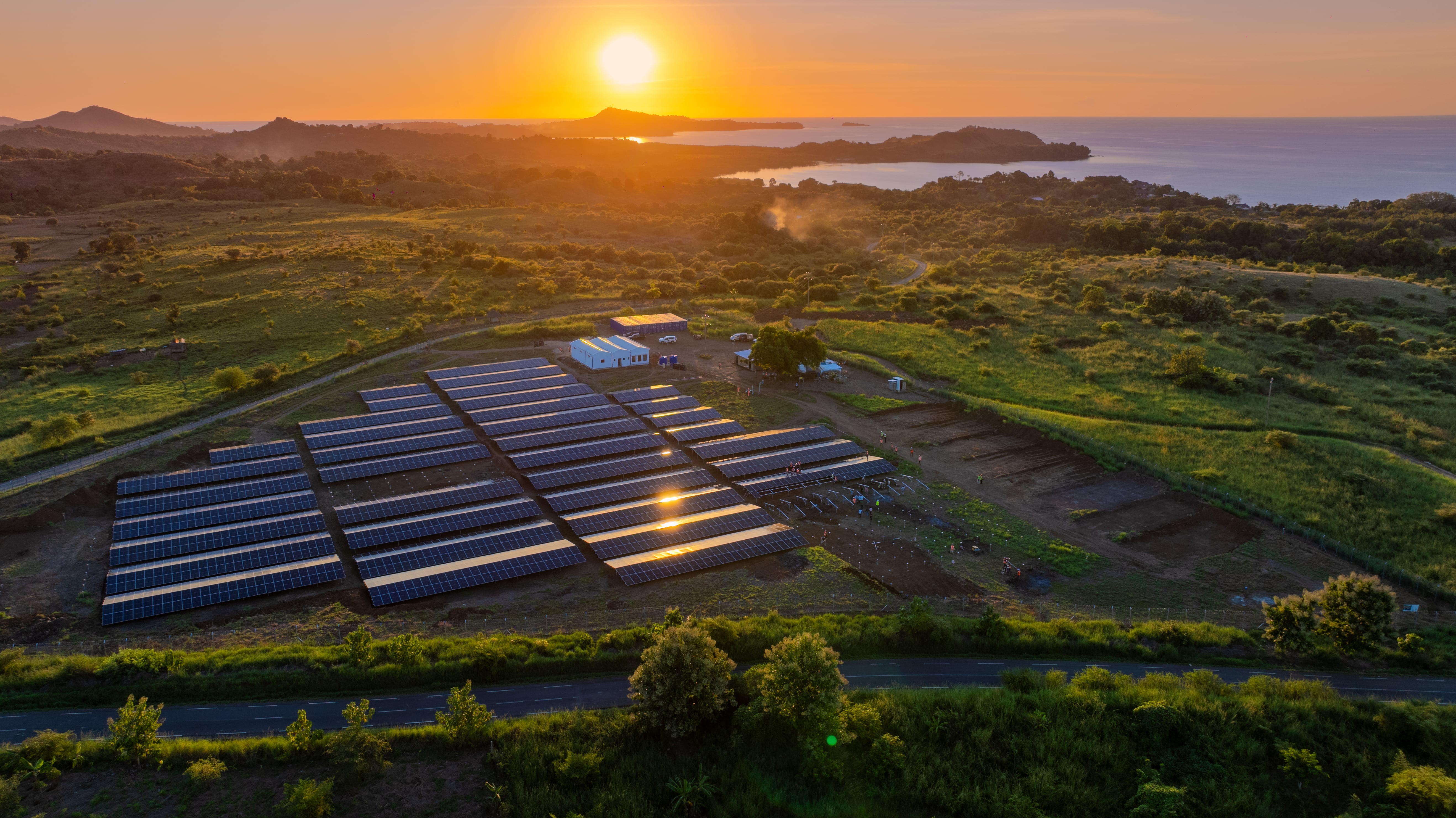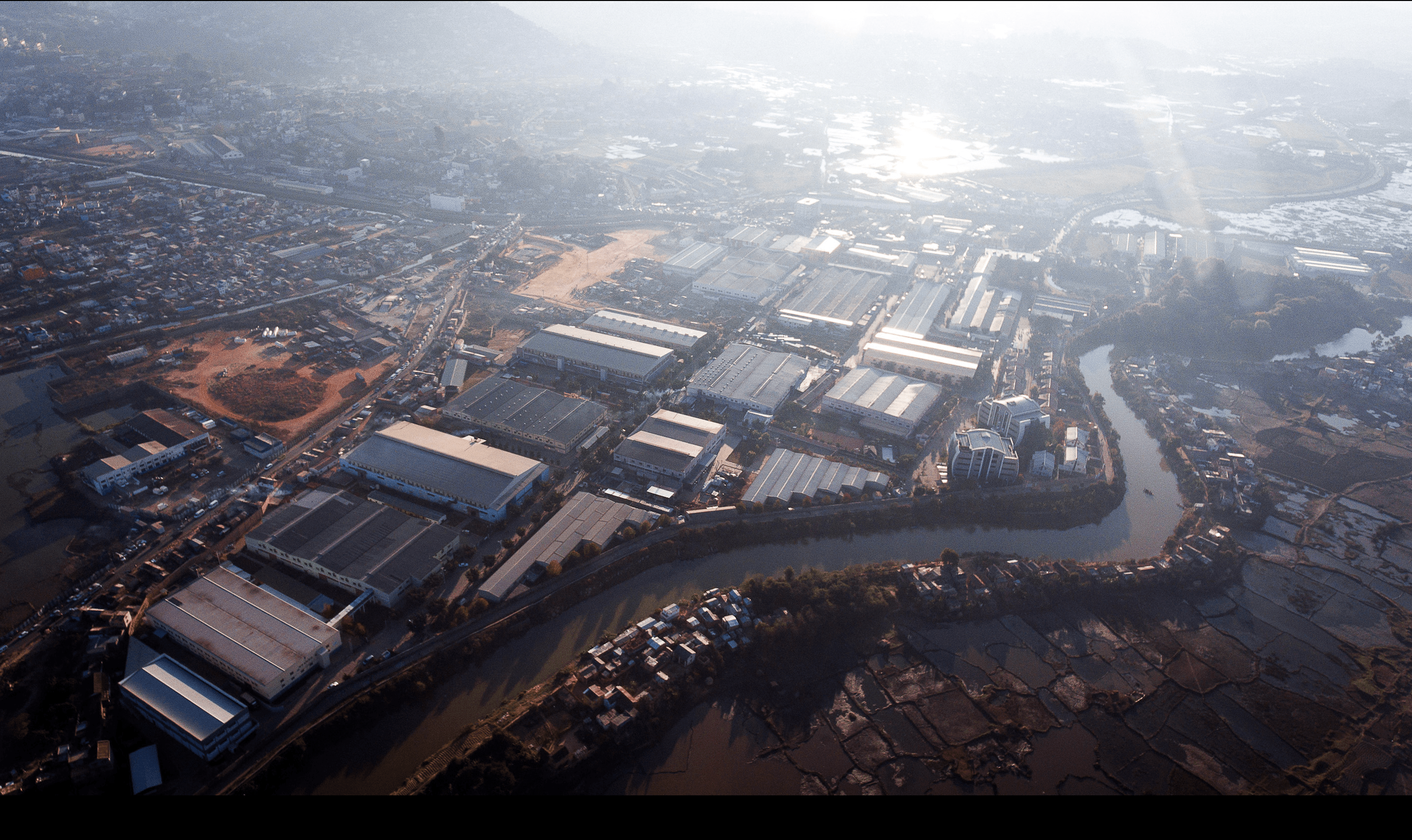1. To start, could you give us an overview of Groupe Filatex and the role it plays in Madagascar’s economic development across energy, infrastructure, and real estate?
We’re a family company founded in 1979, so this is our forty-fifth year. We’re diversified across four pillars: real estate, energy, free zones, and ventures. In energy, we are the market leader; our assets produce roughly forty-two percent of the country’s electricity needs. In real estate, we are one the largest private landowners in Madagascar and we’re building new neighborhoods, complete with green spaces and schools, particularly in and around the capital. We also operate the country’s largest free zone. Altogether, across our flagship free zone we have approximately 218,000 square meters constructed and about 39,000 jobs created, primarily in textiles. Our “ventures” portfolio invests in projects that tie back to our core strengths in energy and real estate.
2. Being the one of the biggest private landowner is a striking claim. What does that portfolio look like on the ground, and who are the end users, local residents, industrial tenants, tourists?
It’s broad by design. First, the free zones: the one in the capital, Antananarivo is our anchor and has grown steadily for four decades. We’ve also developed a second free zone in the west of the country, chosen for its port access and natural trade links with mainland Africa, especially southern Africa. Beyond industrial real estate, we develop residential programs that integrate parks and schools; we put a lot of emphasis on green areas and community services because we want these to be livable neighborhoods. And yes, hospitality is part of the plan. Demand is rising, more airlines are flying to Madagascar, and the room supply is not keeping up. We’re moving to close that gap by bringing international skills and standards into our hospitality projects.
3. Renewable energy is accelerating globally. What is Filatex Energy building, and how do these investments align with Madagascar’s sustainability goals?
We’ve been a major power producer since 2005, so almost twenty years. From 2019 onward we shifted new investment toward renewables and began hybridizing our installed fleet. Today, all our power plants operate in hybrid solar configuration. In parallel, we’re building new capacity: forty megawatts of solar are under construction now and first phase due by year-end, and we’re preparing roughly one hundred and fifty megawatts for the next build cycle in 2026/27.
But generation is only one piece. If you build a solar farm without the transmission to move the electrons and the distribution to deliver them reliably, you’ve only solved half the problem. That’s why we are also upgrading the capital’s grid with TBEA. We think in systems: generation, transmission, and distribution have to advance together. It’s also economic strategy. Reliable, lower-cost renewable power improves competitiveness for textiles, agribusiness, mining, and tourism. Without electricity, nothing scales.

4. What’s next in your pipeline across sectors?
In real estate, the need for quality, affordable housing is significant. We’re actively looking for co-investors who can bring technical depth, UAE partners, in particular, are strong on delivery and operations. Hospitality is another priority. If you’ve visited recently, you’ll have seen that international demand is real but there aren’t enough keys to meet it, especially as air connectivity improves.
On energy, the forty megawatts underway and the 150 megawatts planned are important steps, but Madagascar’s demand is far larger. That’s why we welcome the participation of major international players already entering the market. The country can absorb and needs multiple gigawatts over time, not just hundreds of megawatts.
5. You mentioned competitiveness. How are you investing in human capital, training, upskilling, and job creation, to make this growth inclusive and durable?
Our free zone is a jobs engine: 39,000 jobs created today and growing. We’re developing a second zone in the capital because the textiles talent pool and supporting services are concentrated there, which keeps Madagascar price-competitive. We’re also equipping those industrial roofs with solar to reduce energy costs for tenants and shrink their carbon footprints.
On skills, we’re building a training center inside the free zone focused on energy and real estate trades. The goal is straightforward: more qualified Malagasy technicians who can step into higher-value roles and answer industry demand quickly.
6. As Madagascar strengthens trade and investment ties around the Indian Ocean, how does Filatex position itself to attract global partners?
Track record matters. Filatex is a forty-five-year story of delivery through different cycles and across multiple asset classes. That gives international partners a base of confidence. We bring scale, land, and operating expertise; partners bring technology, systems, and complementary know-how. In that sense, we’re set up for win-win ventures, whether that’s co-developing housing at scale, operating hotels to international standards, or accelerating grid-connected renewables. We’re also using our new industrial zones, one in the capital and one in the west, to attract manufacturers who want to serve Africa from Madagascar.

7. Are you already exploring partnerships or financing with Gulf institutions, especially in the UAE, across your focus areas?
Absolutely. The UAE can be highly impactful in two areas right away: energy and hospitality. On energy, major Gulf groups are entering Madagascar with utility-scale solar. That’s a strong signal, and we welcome it—the need is large and urgent. On hospitality, the know-how in the UAE is world-class. Applying those standards in Madagascar would elevate the whole destination and unlock the tourism potential everyone can see. Across both sectors, we think there’s clear scope for long-term, win-win partnerships.
8. What are you doing on CSR, and what is the Fonds Yavarhoussen?
We treat company CSR and the Fonds as separate streams. On the corporate side, we build schools and back livelihoods projects. One that’s close to my heart is “Orga Earth,” which created about 1,500 jobs for women in the drought-prone west. We built a processing chain for prickly-pear cactus oil, the most expensive cosmetic oil in the world, taking the seeds, extracting the oil locally, and selling it into global luxury supply chains, including LVMH. It’s a model of how value-addition can stay in-country while meeting international standards.
The Fonds Yavarhoussen is a personal initiative launched in 2019. We supported Madagascar’s first participation at the Venice Biennale, then opened an exhibition space in the capital in 2020, about 500 square meters at first, now more than 2,500. We host a new exhibition every three months. The space, called Hakanto Contemporary, was co-founded by me and the artist Joël Andrianomearisoa, who also serves as its artistic director. Hakanto celebrates and supports artistic creativity in Madagascar, offering a free and independent non-profit platform for Malagasy artists, with exhibitions, residencies, and international exchanges. It helps bring the richness of contemporary Malagasy art to the global stage. Recently, Joël Andrianomearisoa artworks joined the Metropolitan Museum of Art’s permanent collection in New York for the opening of the new Africa wing. I’ve joined the board of Tate Modern, and previously served on the board of Zeitz MOCAA in Cape Town. We also partner with the Institut National de l’Histoire de l’Art in Paris to research and publish on art history. If you want a sustainable cultural sector, you need scholarship as well as galleries.
9. Any public-space art initiatives you’re particularly proud of?
In the capital, we’ve installed large-scale sculptures in public areas. Art shouldn’t hide, it should be part of the city. You can feel how proud people are to see work by Malagasy artists in those spaces. Five years ago, you almost never heard Madagascar mentioned on the international contemporary art circuit; today you’ll find Malagasy artists represented at major fairs like Art Basel. Re-placing Madagascar on the global cultural map matters for identity and for the creative economy.
10. A final message for Khaleej Times readers about Madagascar’s investment potential, and the role Groupe Filatex aims to play in shaping that future?
Madagascar’s needs are clear, and so are its advantages. We are leaders in energy, real estate, and industrial zones. We know how to assemble land, deliver infrastructure, and scale operations. What we seek from partners, especially in the UAE, is technical depth and speed. Together, we can deliver housing at scale, build hotels that meet rising demand, and accelerate grid-connected renewable power that lowers costs for every enterprise in the country.
We’re also executing beyond Madagascar: we opened a hospital in Mauritius last year and a second facility this year, and we’re developing solar projects in other African markets. That regional perspective helps us structure partnerships that travel well. In short, Madagascar is ready for long-term, win-win collaboration. And Filatex is ready to be a reliable, capable partner in making it happen.
11. Is there anything we didn’t cover that you’d like to add?
Only this: the opportunity set here is larger than any single company. Energy, hospitality, housing, industry, these are multi-decade nation-building agendas. The more good partners we attract, the faster Madagascar can move.